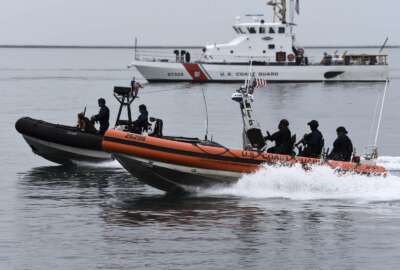
House dems say 2020 budget ‘dead-on-arrival’ for TSA, Coast Guard
House lawmakers are skeptical 2020 budget requests will be enough to tackle attrition, morale and recruitment challenges for TSA or the U.S. Coast Guard.
House lawmakers are skeptical 2020 budget requests will be enough to tackle attrition, morale and recruitment challenges for the Transportation Security Administration or the U.S. Coast Guard.
Lou Correa (D-Calif.), House Homeland Security transportation and maritime security subcommittee chairman, even went as far as to call the proposals “dead-on-arrival,” when TSA and Coast Guard leaders testified during an April 9 hearing.
Despite the proposed budget cuts to both agencies, Coast Guard Commandant Karl Schultz and TSA Administrator David Pekoske defended the administration’s proposals.
TSA staffing shortages, increased attrition
Pekoske said one main goal of the 2020 budget request is focused on modernizing its authentication and checkpoint technologies. He praised Congress’ support and the budget proposal’s increase in appropriations that would allow the agency to purchase more sophisticated X-ray machines. The machines, he said, would help make travel more secure and convenient for customers, including federal employees.
New, updated technology is a plus for TSA, but doesn’t address the biggest issue. Pekoske acknowledged the need for the agency to “right-size,” or to increase the size of its workforce.
The $7.79 billion request for TSA, however, would cut more than 800 full-time positions and 50 canine teams. In his opening statement, Correa questioned the president’s decision to place “additional burdens” on the aviation industry through further program cuts. The 35-day partial government shutdown further highlighted the need to prioritize hiring and retention.
“We have seen in recent years how the growing number of passenger volumes threatens to outpace TSA’s ability to securely screen passengers as long waiting lines and times have grown and created chaos for the industry,” Correa said. “TSA has struggled to address persistent morale and attrition problems as well due to staffing shortages. The recent government shutdown highlighted to the American public that many TSA officers live paycheck to paycheck.”
Sen. Bennie Thompson, chair of the Homeland Security committee, said TSA officers (TSOs) are already underpaid compared to the rest of the federal workforce.
“Congress has repeatedly rejected those cuts,” he said. “In fact, members of this committee worked to include in the TSA Modernization Act language to protect many of these programs.”
Coast Guard workforce, program gaps
The Coast Guard budget request of $9.3 billion barely scratches the surface of what the agency needs to build readiness and address personnel and program gaps. Schultz said in a March 28 hearing that hiring and retention are two of the biggest challenges the Coast Guard has. He said the force needs to start recruiting in different places in order to diversify the workforce and retain more women and members of under-represented minorities.
He echoed the sentiments in Tuesday’s hearing, but said, “We’re at a critical junction … our purchasing power has, in fact, declined.”
The budget would be categorized as non-defense discretionary spending, which could make it more difficult for the Coast Guard to secure additional funding should the need arise. A large maintenance backlog, especially in the shadow of the previous shutdown, also hurts operational readiness.
Related Stories
“I’d say the talent that’s entering the gates is as good as we’ve ever seen,” Schultz said.
One of the largest personnel challenges the Coast Guard faces is in the retention and recruitment of women — which make up less than 15% of the workforce —and minorities. Rep. Nanette Barragán (D-Calif.) asked Schultz about what the agency is doing to further diversify its workforce.
He alluded to a RAND Corp. study from late last month detailing his team’s efforts to address the high level of mid-career women leaving the workforce.
The study suggests examining the differences in retention trends between genders and tracking workforce data elements that are potential barriers to retention.The Coast Guard’s Personnel Readiness Task Force is taking the RAND study into account and is expected to release a final report in 2020.
Barragán asked if the budget proposal included any funds to help with those efforts. Schultz said the appropriations would further sustain their recruitment office and potentially allow them to expand.
Schultz said the budget would still allow them to maintain momentum on current programs, including recruitment, that the service deems critical.
Copyright © 2024 Federal News Network. All rights reserved. This website is not intended for users located within the European Economic Area.
Steff Thomas is a digital editor at Federal News Network.





